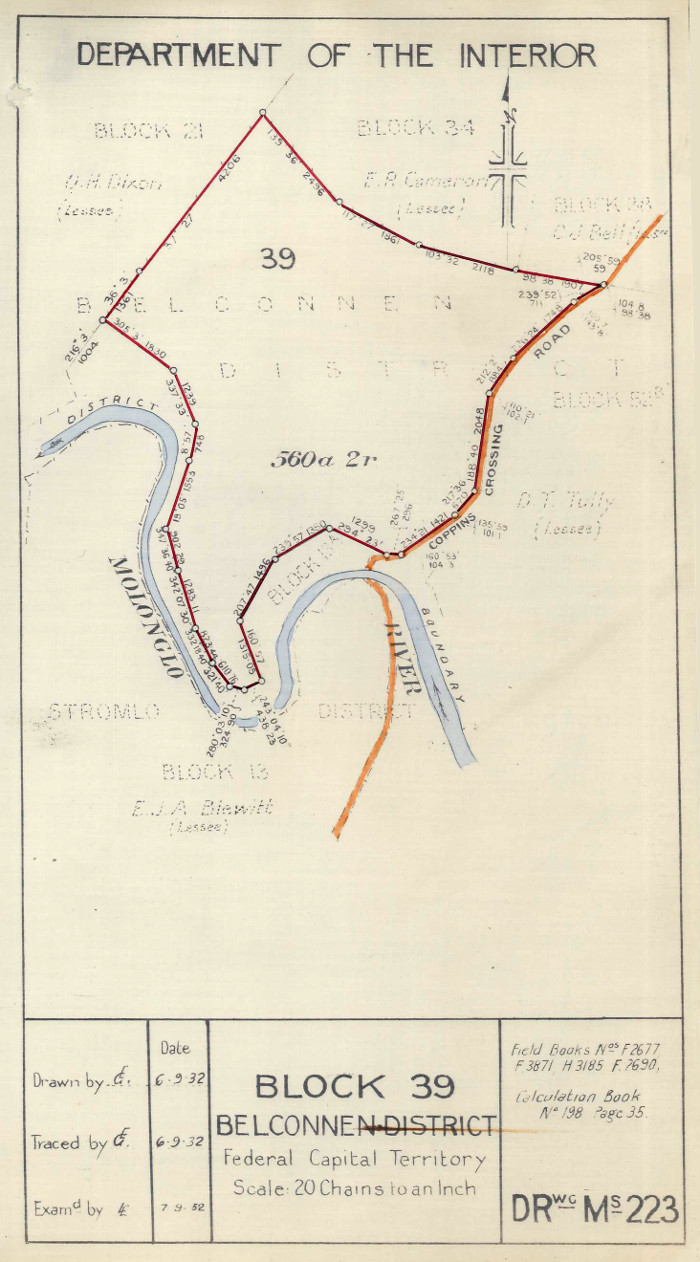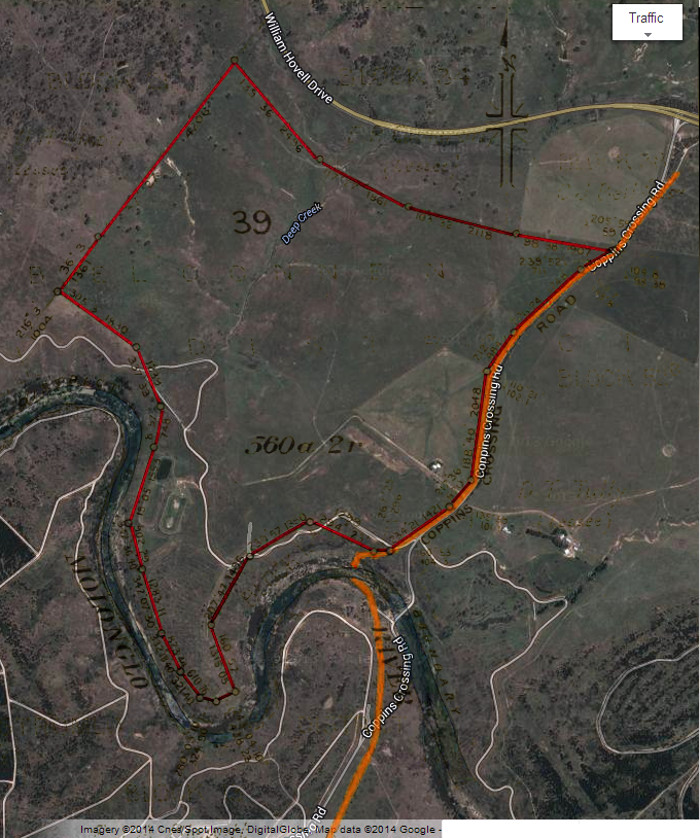James (Jim) Grady
Blocks 110F & 110H Woden District & Block 39 Belconnen District
James (Jim) Grady was born at Tuggeranong in 1892 to David and Sarah Grady, both of who were born and raised in the Tuggeranong district. They had about 160 acres (65 hectares) of land, part of which was inherited from David Grady's parents, covering the upper part of Wanniassa. The site of their home is a vacant block between Sulwood Drive and Longmore Crescent in Wanniassa.
Grady attended the Tuggeranong Public School located in modern day Chisholm. The 'Punishment Book of the Public School at Tuggeranong' records that on the 14th April 1904 he received 2 strokes of the cane for "Showing another pupil how to do a sum in opposition of teacher's orders."
Extract from Punishment Book of the Public School at Tuggeranong. Click on image for larger view.
Grady was farming with his father at Tuggeranong when he enlisted on the 27th January 1916. He embarked for Egypt with the 7th Light Horse Regiment but transferred to the Imperial Camel Corps (later the 1st Anzac Battalion, Imperial Camel Brigade) in September 1916. In January 1917, he was shot in the thigh while at Rafa in Sinai but rejoined his unit a month later. In July 1918, following the disbandment of the Camels, he was transferred to the 14th Light Horse Regiment and was part of the push towards Damascus in September 1918. He returned to Australia the following year and was discharged on 19 September 1919.
Woden Blocks 110F & 110H
In 1920, Grady successfully applied for the Soldier Settlement Woden Blocks 110F of 315 acres (127 hectares) and 110H of 624 acres (253 hectares) for £63/16 and £80 per annum respectively. Grady, who did not live on either of these blocks, only held the leases for three years. During this time, he repeatedly ignored requests from the Federal Capital Commission (FCC) to control rabbit infestations on his blocks.

Plan of Woden Block 110F.

Google Maps image of area c2013 with Woden Block 110F boundary in red.
In 1922, an inspection of his leases by Lands Officer, James Brackenreg, found "The sheep on this area at present carry the brand of Mr Hyles and as far as I can learn are not the property of the lessee". Subletting of Woden 110F and 110H was not permitted under Grady's lease agreement. Grady argued that he was unable to purchase his own stock due to the high prices at that time. However the Lands and Survey Branch disagreed believing that:
"Grady is only acting as a middle man, being the medium through which Hyles and others secure land from the Department which they could not obtain otherwise."

Plan of Woden Block 110H.

Google Maps image of area c2013 with Woden Block 110H boundary in red.
Belconnen Block 39
In 1923, Grady requested permission to exchange his Woden blocks for the 563 acre (228 hectare) Belconnen Block 39, then leased by Hector McIntosh. The Department agreed to the exchange and a ten-year lease commenced on the 14th June that year at an initial rental of £144/7 per annum. As it had frontage to the northern bank of the Molonglo near Coppins Crossing, a condition of the lease required him to allow pedestrian access to land within two hundred yards of the river. Grady ran sheep on the block but did not live on it. In 1930 his sister Mary Blewitt, who lived across the Molonglo from Belconnen Block 39 at The Rivers (Stromlo Block 13), proposed buying Grady's land. He was agreeable to the idea, but the Commonwealth objected to it because the Blewitts were in financial difficulties at the time.

Plan of original Belconnen Block 39.
During the Depression and with falling wool prices, Grady found his block too small to provide a living. In March 1932, he sold Belconnen Block 39 to his neighbour to the east, David Tully, for £360. In 1933, Tully consolidated his Belconnen Block 52B with Block 39 into a single lease. Together, with land on the southern side of the Molonglo, Tully had control of around 1800 acres (728 hectares). Tully sold his land to the Canberra Dairy Society in 1942.

Google Maps image of area c2013 with Belconnen Block 39 boundary in red.
Jim Grady never married and for most of the remainder of his life he lived with his sister at The Rivers (Stromlo Block 13). He died in Canberra on the 19th March 1983.
Sources
- ArchivesACT: Government Property & Tenancy Registers - Belconnen Block 39 (
 PDF 332Kb)
PDF 332Kb) - ArchivesACT: Rate Book : Territory for the Seat of Government - 1927 (
 PDF 17.8Mb) - 1928 (
PDF 17.8Mb) - 1928 ( PDF 18.7Mb) - 1929 (
PDF 18.7Mb) - 1929 ( PDF 8.88Mb)
PDF 8.88Mb) - ArchivesACT: TL993 (Part 1B) - Block 39 Belconnen District - D.T. Tully
- ArchivesACT: TL993 (Part 2) - Block 39 Belconnen - Block 43 Stromlo - Graziers Pty Ltd
- ArchivesACT: AA1968-269(2) - Tuggeranong School Punishment Book
- NAA: (A6273) L1927/1839 - Block No.1 Lanyon District
- NAA: (A1) 1931/2118 - Grady transfer lease Block 39 Belconnen
- NAA: (B2455) First Australian Imperial Force Personnel Dossiers, 1914-1920: http://discoveringanzacs.naa.gov.au/browse/person/189266
- Grazing Land. The Canberra Times, 15 July 1927, p.5: http://nla.gov.au/nla.news-article1215156
- Heritage (Decision about Registration for Callum Brae Precinct, Symonston) Notice 2011: http://www.legislation.act.gov.au/ni/2011-108/current/pdf/2011-108.pdf (
 PDF 796Kb)
PDF 796Kb) - ACT Memorial - Grady, James: http://www.memorial.act.gov.au/person.php?id=2953

